HQ Holden: 40 years
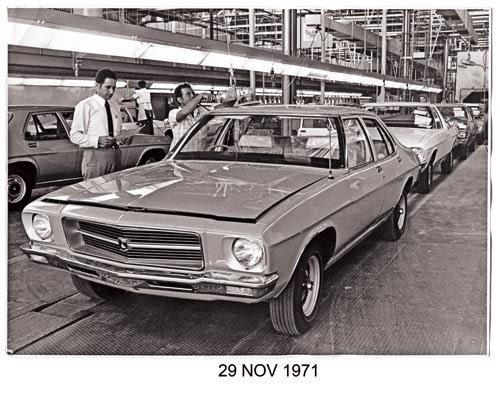 HQ Holden - 40 years
HQ Holden - 40 years

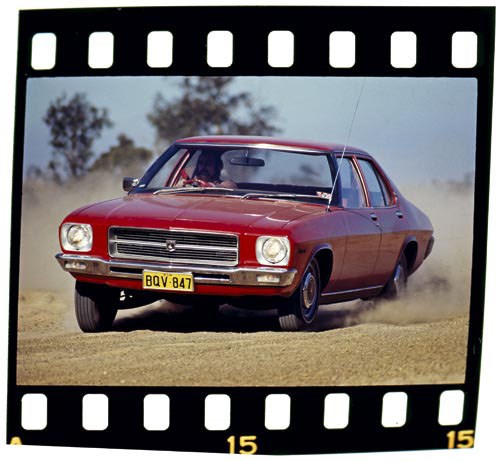 HQ Holden - 40 years
HQ Holden - 40 years

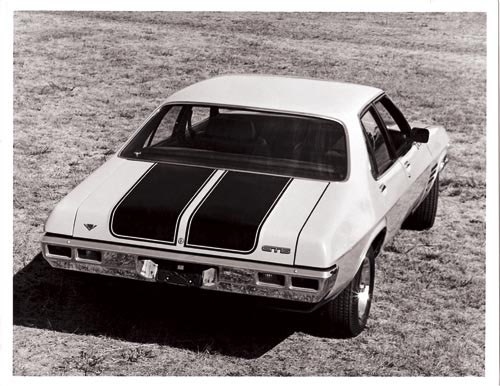 HQ Holden - 40 years
HQ Holden - 40 years

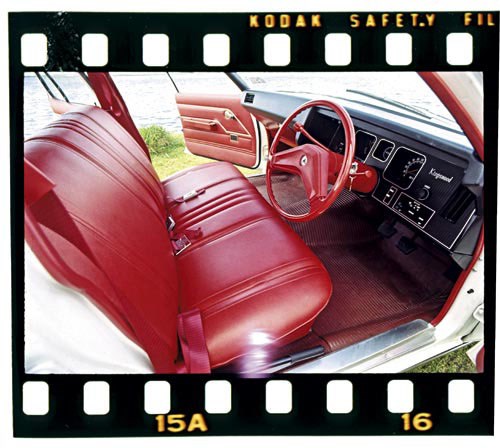 HQ Holden - 40 years
HQ Holden - 40 years

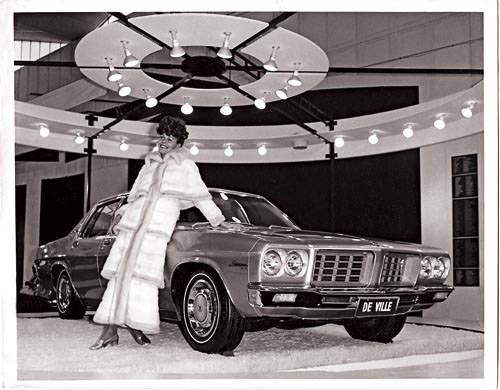 HQ Holden - 40 years
HQ Holden - 40 years

 HQ Holden - 40 years
HQ Holden - 40 years
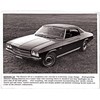

|
|
HQ Holden - 40 years
|

|
|
HQ Holden - 40 years
|

|
|
HQ Holden - 40 years
|

|
|
HQ Holden - 40 years
|

|
|
HQ Holden - 40 years
|

|
|
HQ Holden - 40 years
|
40 years of the mighty HQ. A whole generation of Aussies grew up with these cars, which are becoming increasingly collectible

|
|
HQ Holden - 40 years
|
HQ Holden: 40 years
Forty years after its introduction, the HQ Holden must be seen as one of the most important cars in the history of the Australian automotive industry.
Despite being overshadowed in the public memory by the Bathurst glory machines (most notably the Ford Falcon GT-HO Phase III), it was the 1971 Holden that compellingly showcased the potential of an industry that really began during World War I (when the danger of shipping led to the local manufacture of car bodies), but came of age on November 29, 1948 when the original 48-215 'FX' Holden was introduced to the clamouring public.
The HQ exemplified the brilliant ingenuity of the local industry. It was entirely Australian (as was the LH Torana, which was released in 1974). From the one platform, the product planners developed a range of sedans and coupes, a coupe utility and related panel van, a One-Tonner, the long-wheelbase wagon and luxury sedans.
Here were formidable economies of scale - considerably more than half a million HQs were produced, including 485,650 Belmont, Kingswood and Premier sedans. Imagine if the HQ range had also been built in left-hand drive!
It is perhaps the most beautiful series of cars ever developed in Australia. Even as a Belmont Silver Top, the HQ offered an eloquent statement of style. In Monaro GTS coupe guise, it was nothing short of gorgeous. And the long-wheelbase Statesman De Ville made its Fairlane rival look almost gawky.
Lovely to look at, the HQ was also extraordinary to look out of thanks to those slender A-pillars, the idea of which "was to make a structure narrower when it was fully finished and trimmed than the average distance between eyeballs so there would be no blind spot," according to Holden designer, Peter Nankervis.
Sadly, the HQ's many shortcomings tended to predominate over its formidable virtues in 1971. Paradoxically, the beautifully-styled HQ retained many mechanical elements of the 1948 Holden at a time when the world had moved on and automotive critics were better informed and more outspoken. Where the English, European and US motoring press tended to be kind to the products of their local industry, Aussie critics were more inclined to call a spade a f***ing shovel.
Perhaps the automotive press had forgotten how the original 48-215 had transformed ordinary Australians' lives - the nation having climbed off the sheep's back and into their own Holdens.
The HQ, in standard guise, offered ho-hum mechanicals beneath its lovely wrappings. It combined a rudimentary overhead-valve six-cylinder engine, a top speed of barely 140km/h, three-speed column-shift manual, drum brakes, a front bench seat and cross-ply tyres at a time when the European and Japanese were setting a higher standard.
To mention three examples: the 1968 Datsun 1600 had a high-performance SOHC engine, four-on-the-floor, IRS, more standard equipment than a Kingswood (let alone a Belmont) and cost less; the 1969 Renault 16 TS cost no more than a Kingswood with a few options but rode magnificently on Michelin XAS radials, did close to 100mph (161km/h), had superb seats, a camping body, excellent dynamics and tall gearing; the 1968 Fiat 125 had a DOHC engine, four-wheel discs, plenty of kit and, like the Datsun, set a fair pace around Mount Panorama.
It is easy, looking back, to see how the HQ was received in such a context. The specialist motoring media, led by bearded and messianic Wheels editor, Peter Robinson, lambasted the important new car for its poor handling, mediocre engines and clumsy packaging (poorly shaped boot with spare thrown in and seemingly bolted down where it landed, intrusive dash design etc.).
Whatever considerable brilliance was built into this gorgeous-looking new Holden was, at the time of its launch, overshadowed by these obvious deficiencies. In hindsight, it is easy to see how the story could have been so different!
Doubtless some inept management on the part of Holden contributed to this unfortunate beginning. The chief engineer of GM-H, American George Roberts, who favoured a Cadillac-style ride in combination with prodigious understeer, spoke a different language from Peter Robinson, not to mention Peter Wherrett who did a demolition job on an HJ Premier in late-1974 on his ABC television program, Torque (of which more later).
There was also some complacency. The Holden had never been seriously challenged as the top-selling car in 23 years. (It's worth comparing the success of the Holden at this time with the LCP Government, in power for the same period from 1949-72! In 1972 there were many enthusiasts who believed it was 'time' for Holden to change, too).
Why, then, would marketing executives mount a serious argument for equipping the car with radials or front disc brakes when the public would buy it anyway? And those wanting the brilliant new ventilated front discs could pay extra for them.
Indeed, the options list was formidable. When equipped with front bucket seats, sports suspension and radial tyres, the 253 V8 and a four-speed gearbox, the HQ was a joyous device. Even with the understeer.
The understeer was no accident. Chief engineer Roberts had a party trick for demonstrating what he believed was the car's inherent safety. Driving in a straight line, he would floor the throttle and wind on steering lock. The HQ would begin to describe a leisurely arc. Roberts was not himself a keen driver, which explains plenty. Understeer equated to safety in his book.
Marc McInnes, whose entire working life was spent at Holden from the days of the FJ through until the last years of the 20th century, was an engineer with considerable experience in rallying. Perhaps he nurtured private doubts about the wisdom of the Roberts philosophy but still wrote convincing speeches for the chief engineer.
When I was researching Heart of the Lion: the 50-Year History of Australia's Holden, McInnes told me: "the car gave very, very early advice of pending difficulties in control. In terms of pure safety, you could hold that this was a fine example of advising a car's limits to the driver. The front tyres would squeal long before the car was anywhere near its cornering limit.
"Let's not bury George Roberts without giving him some credit for what he was attempting to do in the driver's interest. The fact that enthusiasts hated it doesn't mean he was absolutely wrong."
In 1972, McInnes moved to Sydney to run the public affairs office for NSW and Queensland. Tellingly, he admitted: "I used to fit sports suspension on all my test cars, and this was much better accepted."
Wherrett's criticism of the HJ's braking concerned the Holden engineers more than what anyone might have had to say about excessive understeer. He was invited to repeat some of his tests at the Lang Lang proving ground. The car in question had the front disc brakes in combination with a pressure-limiting valve to the rear drums.
On national television, Wherrett showed how the valve didn't stop the rear wheels locking and sending the car sideways. It was disastrous publicity. "So they flew me down to Melbourne and I went out to Lang Lang. I did the braking test over and over and, every time, the rear brakes locked up and the car slewed sideways. And we finished up agreeing to disagree. It was all very amicable.
"George Roberts kindly offered to drive me out to the airport. When we got there, I couldn't help myself. I said, 'George, now I know why your cars don't handle. You are the worst driver I've ever been with'."
While the HQ was undoubtedly the most elegant of the HQ/HJ/HX/HZ series of Holdens, the HZ was the best with its 'Radial Tuned Suspension' and uprated equipment levels. It is too easy to say with hindsight that this is how the HQ should have come to market. Here, for the world to admire, was a truly meritorious Australian car. The thin, but strong A-pillars pioneered on the HQ, the front sub-frame (credit to George Roberts here), which made for such fantastic ride quality and suppression of road noise and harshness, the through-flow ventilation (fan-boosted from May 1975 during HJ), the all-coil suspension and the ability to absorb enormous punishment on the toughest roads made the HZ a winner.
But the potential had been there in July, 1971. Leo Pruneau, chief stylist for many years, cited the three-quarter chassis as a major virtue: "the car was most unusual in combining the advantages of an older-style 'frame car' with those of a monocoque.
"That front sub-frame extended all the way back to the centre pillar and the whole rear of the car was monocoque. There have been a few other cars in the world built this way, but not many."
The potential of the HQ in 1971 was perhaps best seen in the case of a Statesman De Ville equipped with the 350 cubic-inch Chevrolet V8, teamed with the Turbo-Hydramatic 400 transmission and riding on Michelins. It would have stood comparison with the world's best sedans, understeer notwithstanding, and none would have kept pace with it on outback roads.
Indeed, factor in those dirt roads - often corrugated - that still predominated in Australia in 1971 and the balance shifts again. Few European cars could stand up to harsh outback conditions (even into the 1980s, according to Peter Robinson). And the understeer that could infuriate keen drivers on bitumen added stability on loose surfaces and wet bitumen. Not only did the dynamic deficiencies turn into strengths, but the ruggedness of the Holden's engineering put it into a superior category.
It's as if the HQ might have been created to justify that later bumper sticker 'classic not plastic'. It is hard to think of any other car in history that blended such prettiness and uncompromising ruggedness. Indeed, it was too feminine in visual appeal to suit the blokey culture of 1971 (and now?). The HJ facelift essentially dumbed the looks down by squaring off the front and rear - what a shame that the sedan lost those lovely rear lights set into the bumper!
In 1971, the HQ's mechanical specification might have looked dated in comparison with the European cars on offer at the time, but how has the passing of 40 years affected the Holden's reputation?
When did you last see a Fiat 125 or Renault 16 TS? Holden engineers who worked on the HQ's formidable torsional rigidity, front sub-frame and long-travel suspension understood the toughness of Australia - many had been around in the 1950s. And the HQ was utterly Australian.
George Roberts may have imposed his Buick/Cadillac ideas on the dynamics, but the car itself was local in all important respects. While the styling picked up influences from Buick and Pontiac, the result was cleaner, leaner and less extravagant. The HQ Holden was more composed in its themes than anything Detroit could offer at the time. (It was true also of Ford Australia's efforts in the 1970s, notably the 1972 XA and the 1979 XD. Then, in 1988, the EA Falcon astonished the rest of the Ford world.)
I was always an admirer. The first time I saw an HQ on the road, I was smitten with its sensational appearance - it was perfect from every angle and perhaps especially the rear. Unbelievable, too, that a Holden could have coil springs all-'round (Falcons still had rear leaf springs), a 'forward-mounted' steering rack and such a supple ride.
As a uni student, I drove taxis and loved getting into an HQ, which felt so sophisticated after the old HK-HG, though surprisingly less refined than the XY Falcon!
If you were to combine all the very best aspects of the HQ-HZ cars in the one vehicle, it would surely have been among the world's finest cars. My own choice would be an HQ Monaro GTS coupe in metallic Lime Green with (Code 10Y) black and white houndstooth cloth trim, with HZ GTS suspension and discs all 'round, the 350 Chevy engine and Muncie four-speed.
Or, at the more affordable end of the spectrum, how about an HQ Premier with the 253, Tri-Matic, GTS instrumentation, bucket seats and a set of Monaro wheels? It would be in Chrome Yellow with black seats with the then oh-so-trendy cloth inserts. Or a menacing Blackwatch Green metallic De Ville with the 350 - a real sleeper. Love it!
The Sandman inaugurated a whole new cult vehicle by melding Monaro elements with van practicality. One can only assume the marketing executives were delighted when Sandmans were festooned by eager owners with warning signs such as, "Don't laugh, your daughter may be inside." It was, to say the least, a more innocent era.
In that year of the Sandman, 1974, I talked my father (then almost 79) into buying an HQ Premier V8 to replace his beloved Peugeot 404. Unfortunately I failed to advise him to specify power steering or air-conditioning. The latter was remedied but the former wasn't and on radials, that car was h-e-a-v-y to park, although great at cruising speeds. But it had the earliest emission controls (1974's ADR27) and tended to stall at the worst moments when cold. He never quite bonded with that car.
I owned a similar Prem myself in 1981. It was immensely solid and lusty enough with the 253. The only reason I parted with it was that I coveted a Rover P6B 3500.
The HQ arrived at a slightly confused point in Holden history. The company still had its gaze more on Detroit than Munich but plenty of European qualities found their way into this car, which was at once so sophisticated and so gauche.
Management's response to the criticism of the HQ's dynamics was the introduction of its 'ride and drive' programs. John Bagshaw, who was sales and marketing manager and later (at VN time) managing director says: "… after that we set up a system whereby there were ride evaluation programs … But up until then … you never got a team together to drive and evaluate forward product. Never."
And that's something else for which we can credit the HQ!
TIMELINE
July 15, 1971HQ officially goes on sale
November 1971 Introduction of One-Tonner
March 1972 Upgraded front seats with standard head restraints
September 1972 SS special edition, based on Belmont
(no armrests on doors); Holden's first 'Vacationer' sedan/wagon
1973 Speedos go from mph to km/h; orange front blinkers
April 1973 Monaro GTS/4 sedan
November 1973Silver Anniversary Premier (left, 1500 built)
March 1974 Sandman panel van
October 1974 Replaced by HJ series
SPECIFICATIONS
ENGINES
173:2838cc 6cyl, OHV, 12v
Bendix-Stromberg single-barrel downdraft carburettor
88kW (118hp) @ 4400rpm
228Nm @ 2000rpm
202:3298cc 6cyl, OHV, 12v
Bendix-Stromberg single-barrel downdraft carburettor
101kW (135hp) @ 4400rpm
263Nm @ 2000rpm
253:4142cc V8, OHV, 16v
Bendix-Stromberg two-barrel downdraft carburettor
138kW (185hp) @ 4400rpm
355Nm @ 2400rpm
308:5044cc V8, OHV, 16v
Rochester four-barrel
downdraft carburettor
179kW (240hp) @ 4800rpm
427Nm @ 3000rpm
350:5733cc V8, OHV, 16v
Rochester four-barrel
downdraft carburettor
205kW (275hp) @ 4800rpm
488Nm @ 3200rpm
Dimensions
LENGTH 4763mm (sedan/coupe); 4826mm (wagon)
WIDTH1880mm (sedan/coupe); 1877mm (wagon)
HEIGHT
1372mm (sedan);
1392mm (wagon);
1349mm (coupe)
TRACK(f&r): 1529mm
WEIGHTS
1341kg (Belmont sedan);
1364kg (Premier sedan);
1400kg (Kingswood wagon);
1432kg (Monaro GTS);
1464kg (Premier V8 wagon)
NUMBER BUILT
485,650 (HQ sedans)
13,872 (HQ Monaro)
18,092 (HQ Statesman)
Unique Cars magazine Value Guides
Sell your car for free right here
Get your monthly fix of news, reviews and stories on the greatest cars and minds in the automotive world.
Subscribe

.jpg)






